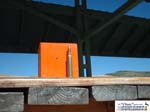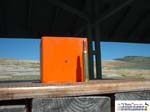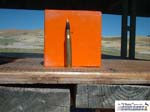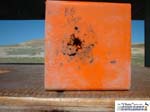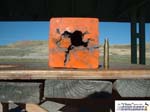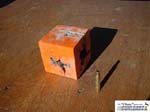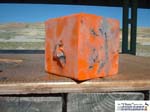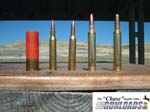
- Home
- Welcome to GunLoads.com
 Main Menu» Home
Main Menu» Home
» Reloading Shop
» Reviews
» Staff Reviews
» Member Reviews
» Reloading
» Pistols
» Rifles
» Shotguns
» Printable Targets
» Rifle
» Pistol
» Sniper
» Fun
» Animal
» Load Sheets
» Tips & Safety
» Gun Safety
» Reloading Tips
» Community
» Gallery
» Hunting Seasons
» Forums
» Submit News
» Clothing Store
» Hunting Videos
» Others
» Link To Us
» Feedback
» Recommend Us
» Photo Hosting
» Donations GunLoads Hosted Sites
GunLoads Hosted Sites Our GoalOur goal is to bring you everything you need to accurately reload your own weapon of choice, along with all the accessories to go with it. Including, free printable targets, tips, safety instructions and of course gun loads.This site is going to be as much member run as possible. With member reviews, stories, and creativity! Thanks and enjoy your stay.
Our GoalOur goal is to bring you everything you need to accurately reload your own weapon of choice, along with all the accessories to go with it. Including, free printable targets, tips, safety instructions and of course gun loads.This site is going to be as much member run as possible. With member reviews, stories, and creativity! Thanks and enjoy your stay.
LenKaiser
Published on 10-15-2014 11:34 AM Number of Views: 2391I am just throwing out some thoughts on the subject. Really it's pure conjecture and I am really very excited about the Scientific results and conclusions that we have derived.
We just may have revolutionized and changed industry standards since 1905"; "making the flat base bullet obsolete"; or at least questioning it. We (NwCP) are at the forefront of revolutionizing the handgun bullet. "sub-sonic velocities", that's were most handguns are and operate (below the speed of sound). Please note the turbulence from "cursory fluid dynamics analysis" photos and note the lack of turbulence behind the bullet of the RBT as opposed to the drag caused by the flat base bullet.
Science has now proven that the base of the bullet is MORE important than the nose of the bullet at handgun velocities. This is what allows the increased penetration and accuracy.
Now I have "Scientific" proof!!!
Here are the NwCP Boat-tail measured BC's and related data and cursory fluid dynamics analysis photos.
All projectiles measured at a velocity range of 925-800fps. Testing was done through a tandem six screen chronograph (Slide 1) at ranges of 3 to 100 yards. The deceleration data and resulting drag data was checked by placing onion skin paper on the chronograph frames. By comparing bore line with actual bullet drop, the drag function could be checked. The test firearm is a Thompson Contender, in .45 Colt, barrel clamped to a rigid bench. Trigger actuation was remote hydraulic and all loads were with Blue Dot powder, Starline cases and Federal Large Pistol primers. NwCP projectiles were compared to the Hornady 300 grain XTP, Hornady 300 grain SST, and Speer 260 grain JHP. These bullets were selected because they represent some of the best bullets in their class. Some bullets tested were excluded from test results, because of lack of quality or lack of specific gravity..
A second experiment was conducted to determine the depth of penetration in water. This test was conducted by simply firing the various projectiles into an twelve foot water trough (Slide 2) and measuring the distance traveled.
Results:
Temp 48°F
Elevation 2500 ft
Barometric Pressure 30.00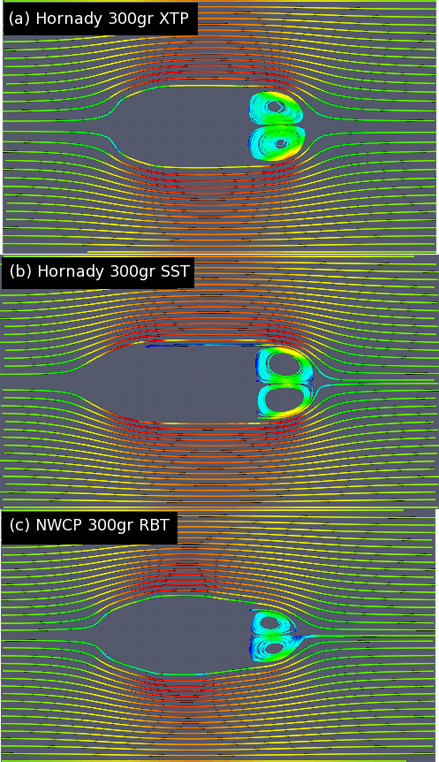
Table 1
Projectile
G1 Ballistic Coefficient (800-900fps)
NWCP .452” 260gr. Rebated Boat Tail
.200±.002 lb/in2 n=5
NWCP .452” 300gr. Rebated Boat Tail
.265±.001 lb/in2 n=5
Speer .452” 260gr. JHP
.173±.001 lb/in2 n=5 (.171 reported by Speer)a
Hornady .452” 300gr. XTP
.194±.002 lb/in2 n=5 (.200 reported by Hornady)a
Hornady .453” 300gr. SST
.248±.004lb/in2 n=5 (.250 reported by Hornady)a
a The ballistic coefficients provided by Speer and Hornady are not necessarily “G1”.
Projectile
Penetration in Water (1000 fps)b
NwCP .452” 260gr. Rebated Boat Tail
78.7±2.4 inches n=8
NwCP .452” 300gr. Rebated Boat Tail
92.1±3.1 inches n=8
Speer .452” 260gr. JHP
50.0±5.3 inches n=15
Hornady .452” 300gr. XTP
70.6±2.4 inches n=8c
Hornady .453” 300gr. SST
79.5±4.3 inches n=8
bThese are normalized impact velocities.
cThe Hornady XTP did expand a small amount at this impact velocity, decreasing its penetration.
Note: NwCP 260 grain vs Hornady SST 300 grain inches of penetration in water.
Note: NwCP 260 grain B.C. vs Hornady 300 grain XTP B.C.
Conclusions:
The lower drag observed with the NwCP RBBT bullets provides for a higher ballistic coefficient and less measured drop as compared to more traditional handgun bullets. In some cases these differences are large (Table 1). The .45 caliber 300 grain NwCP RBBT G1 coefficient is 25+% higher than the .45 caliber Hornady XTP and 6% higher than the Hornady SST. The 260 grain NwCP RBBT G1 coefficient is 13% higher than the Speer 260 grain JHP. In addition, these bullets provide this ballistic advantage without the need for a sharp bullet point, which would limit their use in tubular magazines.
Along the same lines as the air-drag measurements, the water penetration measurements further display the streamline nature of the rebated boat tail design at handgun velocities. The .45 caliber 300 grain NwCP RBBT penetrated an incredible 92 inches of water at an impact velocity of 1000 fps. This is a full 12 inches (13%) further than the pointed Hornady SST at the same impact velocity. It should be noted here that the Hornady XTP did begin expansion at these velocities and this did likely limit its penetration. The 260 grain NwCP RBBT also performed exceptionally well with a penetration of nearly 79 inches; a full 36% further than the Speer 260 grain.
To further explain the mechanics of these observations, we have provided a cursory fluid dynamics analysis of three of the bullet forms at a simulated 1000 fps velocity. Slide 3 shows a comparison streamline plot of the Hornady 300 grain XTP (plot a), Hornady 300 grain SST (plot b), and the NwCP 300 grain RBBT (plot c). Upon visual inspection of the three plots, one can make two important observations. First of all, one can see the reduced turbulence at the base of the NwCP RBBT design compared to the other two bullets. Second, it is apparent that at these velocities, the nose profile makes little difference.
Table 2
Projectile
G1
Calculated Drag
300 grain NwCP RBBT
.265
0
300 grain Hornady SST
.250 (+5%)
+4%
300 grain Hornady XTP
.200 (+25%)
+40%
Calculated drag coefficients, from the fluid dynamics analysis, match with the experimental G1 values (Table 2). The NwCP RBBT design is predicted by the fluid dynamics analysis to have a drag roughly 4% better than the pointed Hornady SST design at these velocities. The experimental value was determined to be 5%. The NwCP RBBT design is predicted to have a 40% advantage over the Hornady XTP of the same weight by the fluid dynamics analysis. The experimental G1 difference was determined to be 25%. This may seem like a discrepancy; however one must remember that the experimental values are G1 ballistic coefficients that do not model the behavior of the XTP design very well. This is an important note, because it further supports the use of fluid dynamics over arbitrary ballistic coefficients.
The moral of this story is: at sub-sonic velocities the handgun bullets' base has a great deal more importance than the nose of the bullet in reference to accuracy, B.C. and penetration, PERIOD!!!!!!
The most important thing to remember about a bullet base or any flat surface is the bigger the base, the bigger the vortex it will create. An example of this is: lay two sheets of plywood on top of each other, then try and pick up the top one with out picking up the bottom. It takes a lot of effort and eventually the bottom one breaks free. Now do the same thing with the plywood sheet turned on its edge; they separate easily. This same theory applies to the base of a bullet. The bigger it is, the more it tries to pull everything with it. The smaller the base is, the better it goes through things. This is why my little football bullet works so well!
© Copyright 2008 Robert R Sauter (NwCP)
All rights reserved,including the right to reproduce this article or any part thereof in any form or by any means,electronic or mechanical,including photo-copying,recording, or by any information storage and retrieval system, without permission in writing from NwCP..
Thanks,
Robert R. Sauter (AKA Bullet Bob...)
406-723-8683 (anytime)Specialty Projectiles for Small Arms
Custom Produced by:
Northwest Custom Projectile
Robert R. Sauter (AKA BULLET BOB)
P.O. Box 127
Butte,Montana 59703
406-723-8683
http://www.customprojectile.comIndependent testing was done by:
Buchanan Ammunition Company, Inc.
1535B Crockett Ridge
Coeburn, VA 24230
(276)-395-3975 TEL
http://www.buckammo.comFluid Dynamics Analysis
DSB Scientific Consulting
616 Finch Ct., Lugoff, SC 29078
(803)-408-2729 TEL
© DSB Scientific Consulting 2008© Copyright 2008 Robert R Sauter Permission has been granted to GunLoads.com for display of this article.
Published on 10-15-2014 08:38 AM Number of Views: 17552Reviews submitted by members of Gun Loads.
Would you like to have your story published and viewed by people from all over the world? Well... You can! This section of Gun Loads is to provide the members here a place to show off their writing talent and talk about something that is related to what we do. This can be shooting, hunting, just about anything outdoor related. Thanks and enjoy
Reviewer Title Product Date Jim A Berndt Barnes Reloading Manual Number 4 Barnes Reloading Manual Number 4 9/15/08 Robert R. Sauter Boattail Handgun Bullets Boattail Handgun Bullets 8/17/08 Jim A Berndt Transition from Rimfire to High-Power Hammond Game Getter 6/23/08 Versifier Peep Sights For Hunting Rifles Peep Sights For Hunting Rifles 7/29/07 El Oso Hoppe's Elite Bore Cleaner Hoppe's Elite Bore Cleaner 4/13/2006 Jim Berndt Reduced Loads Without Reloading Hammond Game Getter 4/6/2006 Capt Walt Fluid Film Fluid Film 2/7/2006 Capt Walt Henry Big Boy .44 Mag Henry Big Boy .44 Mag 12/21/2005 Fred K. Aron Ruger Super Blackhawk 4 5/8th Ruger Super Blackhawk 4 5/8th 6/3/2005 Published on 10-15-2014 08:21 AM Number of Views: 11935Web Site: http://www.ballistictec.com/
Writer:Willy Snyder
Date: July 19th, 2005
BackgroundThe Sniper Training Cube is a 4" x 4" x 4" solid block of Ballistic Polymer manufactured by Ballistic Technologies. It's said that they can take any caliber from a .17HMR to a .50BMG at point blank range. A rough estimate would say that it's about 3 pounds. It's also suppose to react violently and unpredictable after being hit giving you the effect of having to shoot it at different angles, different and changing yardages, and under different circumstances. We found this out after shooting it at 180 meters and it dipped down into a small pit where we overshot it. (As you will see in one of our videos) So without further ado, lets get started.Click to EnlargeTest Shot 1Our first shot we did was at 25 yards shooting a 300 Weatherby with a 180 Grain Sierra Round Nose bullet using 83 grains of R25. This shot right through it with a very small entrance wound of about 1/4 inch and even smaller exit wound with about 1/8 inch but was cracked. (As the pictures will show) The block jumped back about 5 yards after being struck, but took the bullet very well.EntranceClick to EnlargeExitClick to EnlargeVideo
Test Shot 2Our second shot was using a Winchester .270 with a Nosler 130 Grain Ballistic Tip. This went right through the block just as the Weatherby did. The only difference was the size of the entrance and exit holes. The entrance hole was about 1/8 of an inch whereas the exit hole was about 1/4 of an inch. The cube got knocked back about 5 yards as well.EntranceClick to EnlargeExitClick to EnlargeVideo
Test Shot 3Ok, time for a real test. For our test shot 3 we pulled out the 12 gauge and loaded up a 1oz Winchester Rifled HP slug. We setup the block about 20-25 feet away just in case we had any backlash, and to see if anything would come back for our later point blank test. After shooting, it finally came to a rest about 10 yards from where it was shot. Surprisingly, nothing came back on us after plowing it dead center and even more surprising was the fact that all there was; was a 3/4 inch hole going in and nothing coming back out. It took this test very well.EntranceClick to EnlargeExitNo ExitVideo
Point Blank TestOk, so we know it can take a 1oz slug at 20-25 feet away. Lets try another slug at about 4 feet away. (video shows this). Well we fired it off and it landed about 15 yards away again with no exit hole. Obviously these bullets had to mushroom out pretty good in there. We decided, since we were already setup to go, lets try another point blank shot with some 3 inch BB (Double B) shot. We fired this one off and it flew about 15 yards as well, but the entrance hole was found rather quickly. It blew close to a 1 1/4 inch hole going inside and speckled the outside with pellets. (See the Entrance picture below) We figured 1 shot of point blank BB shot was enough. It caused some good damage, and we have some reasoning to think it hit the two mushroomed slugs inside and cause some extensive internal damage (as later pictures show)EntranceClick to EnlargeExitNo ExitVideo
Reaction Close RangeOk, we saw what some various calibers can do to this guy, now lets test some reaction to this cube at about 30 yards shooting it multiple times. As you can see in the video there was some reaction, but nothing too spectacular. Although, (and remember the video camera is not looking through the scope) it did bring on some interesting results as it was shot backwards. With the tall grass, it actually hid behind the grass so much as you could only see a small part of orange and had to shoot accordingly. This was shot using the .300 Weatherby.EntranceNo ImageExitNo ImageVideo
Reaction From a DistanceWe tested the reaction again from about 180 meters which brought on some fun results. I shot three times, the first time it shot backwards a bit, the second time it shot up in the air, rolled back, and actually fell into a small pit with some grass covering it up. The third shot (and I hate to admit it, but I will) I missed and shot over it. This was really an exciting experience shooting the cube from this far and watching where it landed. I only shot three times at this point, but I could imagine by shooting more rounds this thing could end up just about anywhere.EntranceNo ImageExitNo ImageVideo
After All The ShotsAfter we got done, and counting up the shots, here is what we shot.Weapon Times Bullet Type Bullet Type 12 Gauge Shotgun 7 1oz Rifled HP Slug BB (Double B) Shot .270 Winchester 17 130 Gr Nosler Ballistic Tip 130 Spitzer Boat Tail .300 Weatherby 11 180 Gr Sierra RN 180 Gr Core-Lokt (Factory) EntranceClick to EnlargeNo ImageVideo
In ConclusionThe GoodIt was very fun to shoot this cube at a distance and watch it's reaction to various calibers and see what happens. By clipping the side or shooting low it would advance the cube in all different directions and sometimes even hide behind some grass or a spot of sagebrush, which you would have to watch or look close to be able to get a shot. A great tool for snipers who need this sort of practice. Also a great target for those varmint hunters who want to learn to adjust for various yardages as well. With it's orange color it also makes it easier to see at greater distances.The BadWe fired 35 high caliber rounds at this cube and it did come out pretty badly damaged with a large hole (above image) on one side that goes in almost 3 inches. Along with other large holes on the other exterior sides. Also, as mentioned earlier I think a large part of that hole was due to re-hitting the mushroomed slug inside and causing some explosive action inside. This was one days shooting and I think given more ammunition this block will split apart and become inoperable. Which we intend to do and give an update. Also, because of it's size (4" x 4") it would make it very hard to shoot in places of tall grass or sagebrush without propping it up first.Misc. PhotoClick to EnlargeMisc. PhotoClick to EnlargeRangeClick to EnlargeBulletsClick to EnlargeSpecial ThanksI would like to thank everyone who read this review and found it insightful. I hope you enjoyed reading it as much as I enjoyed shooting it. I would also like to especially thank the people at "Just Shoot Me Products" for allowing me to shoot their fine targets and give a review.by Published on 10-14-2014 08:03 PM Number of Views: 11886Published on 10-14-2014 07:59 PM Number of Views: 11596The New XD 45ACP review coming soon.
by Published on 10-14-2014 07:57 PM Number of Views: 11045Published on 10-14-2014 06:41 AM Number of Views: 1316Wyoming Hunting Seasons: Currently we do not have a listing for Wyoming, if you are aware of the hunting seasons for WyomingContact Us.
Wyoming State Page: Hunting Seasons (Link to come) Last 5 Loads
Last 5 Loads Old Articles
Old Articles
| BP | Bronze Point | IMR | Improved Military Rifle | PTD | Pointed |
| BR | Bench Rest | M | Magnum | RN | Round Nose |
| BT | Boat Tail | PL | Power-Lokt | SP | Soft Point |
| C | Compressed Charge | PR | Primer | SPCL | Soft Point "Core-Lokt" |
| HP | Hollow Point | PSPCL | Pointed Soft Point "Core Lokt" | C.O.L. | Cartridge Overall Length |
| PSP | Pointed Soft Point | Spz | Spitzer Point | SBT | Spitzer Boat Tail |
| LRN | Lead Round Nose | LWC | Lead Wad Cutter | LSWC | Lead Semi Wad Cutter |
| GC | Gas Check |

Copyright © 2024 vBulletin Solutions Inc. All rights reserved.
vBulletin Skins: Len M. Kaiser Web Design










